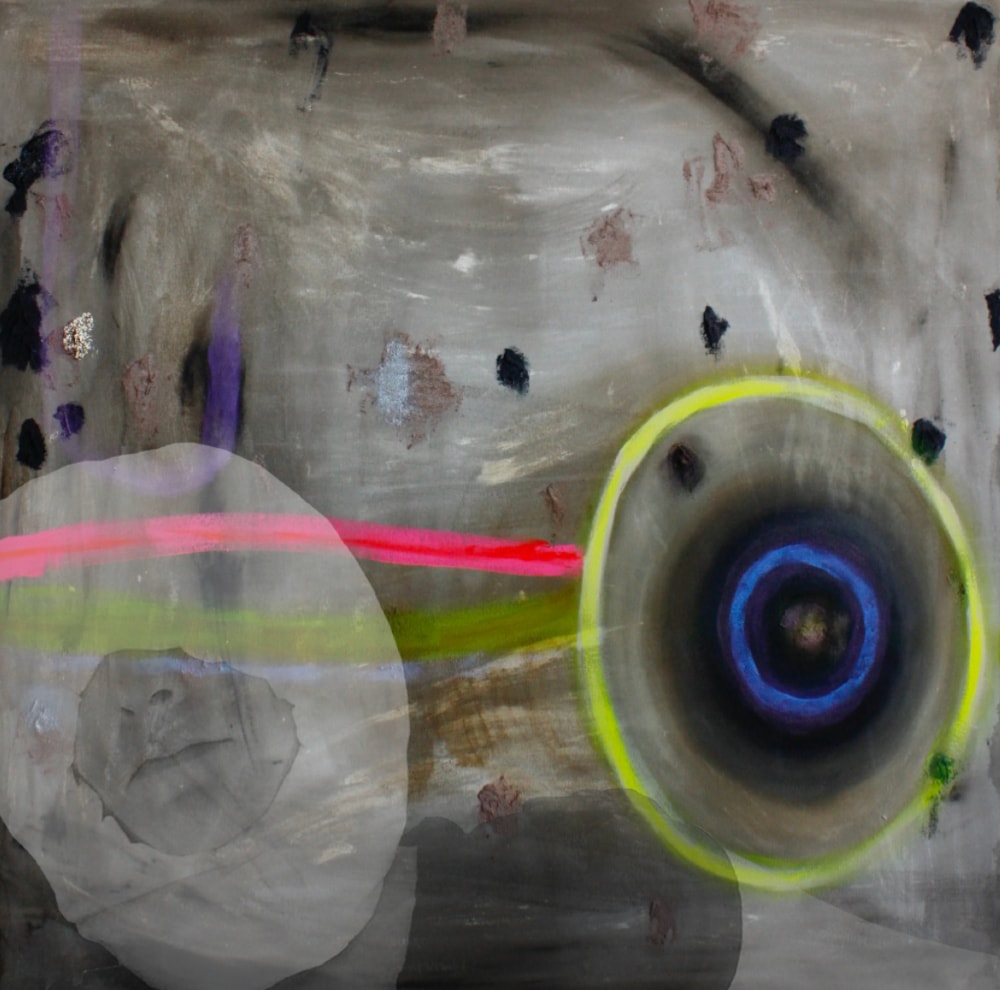After Gravity
By Kyla Kegler
After Gravity explores my memories of searching for the coziness of small spaces, the impression of standing next to gigantic objects, and the sense of being grounded by physical mass. I think of these spaces and sensations as portals into my body.
The exhibition consists of abstract paintings of gravity, a weather balloon —8′ in diameter, and “Compression Therapy and Elevation Therapy”—an installation of sandbags and suspended slings that guests can use to feel weightedness and weightlessness. I center my work around the exploration of feeling, in opposition to the seductive inertia of not feeling. I define feeling in this work as a vigilant mode of perception that accounts for the spectrum of subtle sensations present in any given moment. In this definition of feeling I contrast it with states such as ennui, autopilot, and hyper-cognitive modes of perception that rely so heavily on the intellect that sensation and emotion get ignored. I see feeling as a radical act of resisting apathy and finding satisfaction.
I’m inspired by feelings I enjoyed as a child in moments like: playing “orphans lost in the woods” with my sisters in the dug-out snow igloo in the backyard; curling up in the blanket-fort under the dining room table; feeling the compression and weight of a medical device taking my blood-pressure; the weight of the lead x-ray vest; asking my parents to sit on my lap; good hugs. I’m attracted to these feelings that bring me in close proximity to physical and emotional edges; that humble and comfort me through relationship to and awareness of my greater surroundings.
After Gravity works with scale and gravity.
- Scale: when I am in a small space or next to a large object, I become aware of my mass in proximity to the architecture around me.
- Gravity: the paradox that by adding physical weight to my body in the form of compression therapy I actually relieve emotional weight; that experiencing the physical effects of gravity (weight on my body makes me aware that I have mass, dimensions and limits to my physical form) relates to a conceptual notion of gravity (I have impact; significance; consequence; implication…)
In other words, exploring the ways in which we are simply bodies—with mass and volume and thus experiencing the pull of other bodies such as the earth and thus gravity—is, surprisingly, also a way to trigger an awareness of the ways in which we transcend our bodily form.



